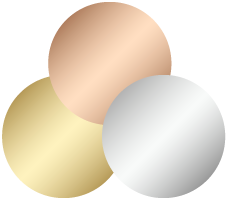Associated with femininity and elegance, rose gold is a beautiful material choice for any piece of jewellery, but is particularly striking in 18ct rose gold wedding rings and engagement rings, thanks to its subtle shine that compliments any skin tone. Rose gold jewellery is a very popular choice among our customers, with pre-owned antique rose gold jewellery as lovely today as the day it was produced. Contemporary jewellery designers are keen to use this precious metal in their pieces, boosted by celebrity endorsement and its unmatched versatility.
What is 18ct rose gold?
Gold has been considered a precious metal for hundreds of years, with ancient Mayan and Egyptian civilisations taken with its glowing form, which they believed bore a striking resemblance to the rays of the sun. When mined, solid gold is a yellow colour, hence the term ‘yellow gold.’ To make rose gold the mined gold is smelted with a mixture of metal alloys to change the colour. In the case of rose gold, copper and silver are added to the mix to give it the pink blush tone that we have come to know and love. How much copper and silver are added to the mix depends on two things - one, the desired tone of the rose gold, and two, the preferred durability of the final piece of jewellery.
Gold in its pure form is a soft metal which is measured in carats. Solid gold is 24ct, which is unsuitable for jewellery, scratching and denting easily. Jewellery is produced in alloys using 22ct or less to give it longevity. At Bradleys, we prefer to deal with 18ct gold, which is hard-wearing and has a distinct pink hue that endures over time.





